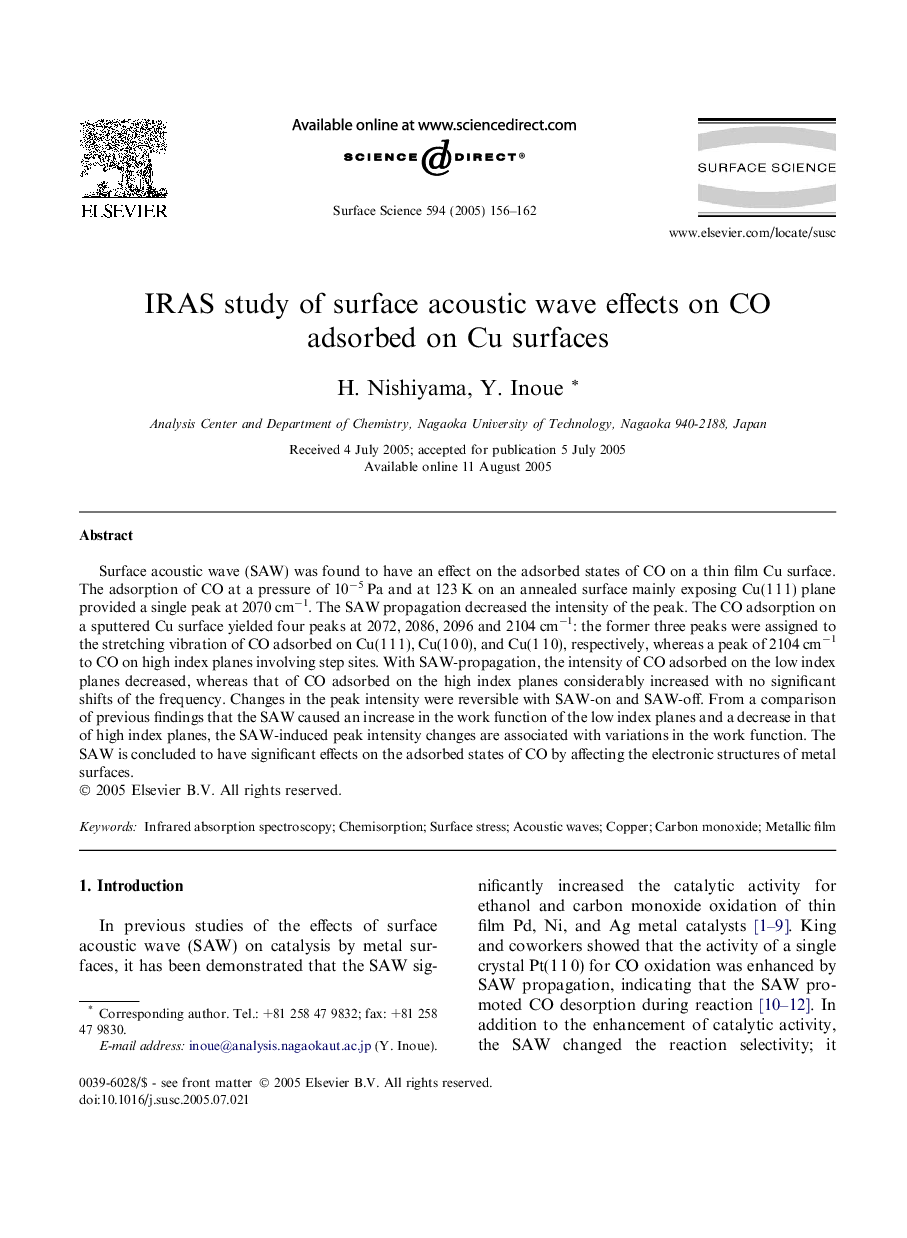| Article ID | Journal | Published Year | Pages | File Type |
|---|---|---|---|---|
| 9594967 | Surface Science | 2005 | 7 Pages |
Abstract
Surface acoustic wave (SAW) was found to have an effect on the adsorbed states of CO on a thin film Cu surface. The adsorption of CO at a pressure of 10â5Â Pa and at 123Â K on an annealed surface mainly exposing Cu(1Â 1Â 1) plane provided a single peak at 2070Â cmâ1. The SAW propagation decreased the intensity of the peak. The CO adsorption on a sputtered Cu surface yielded four peaks at 2072, 2086, 2096 and 2104Â cmâ1: the former three peaks were assigned to the stretching vibration of CO adsorbed on Cu(1Â 1Â 1), Cu(1Â 0Â 0), and Cu(1Â 1Â 0), respectively, whereas a peak of 2104Â cmâ1 to CO on high index planes involving step sites. With SAW-propagation, the intensity of CO adsorbed on the low index planes decreased, whereas that of CO adsorbed on the high index planes considerably increased with no significant shifts of the frequency. Changes in the peak intensity were reversible with SAW-on and SAW-off. From a comparison of previous findings that the SAW caused an increase in the work function of the low index planes and a decrease in that of high index planes, the SAW-induced peak intensity changes are associated with variations in the work function. The SAW is concluded to have significant effects on the adsorbed states of CO by affecting the electronic structures of metal surfaces.
Keywords
Related Topics
Physical Sciences and Engineering
Chemistry
Physical and Theoretical Chemistry
Authors
H. Nishiyama, Y. Inoue,
